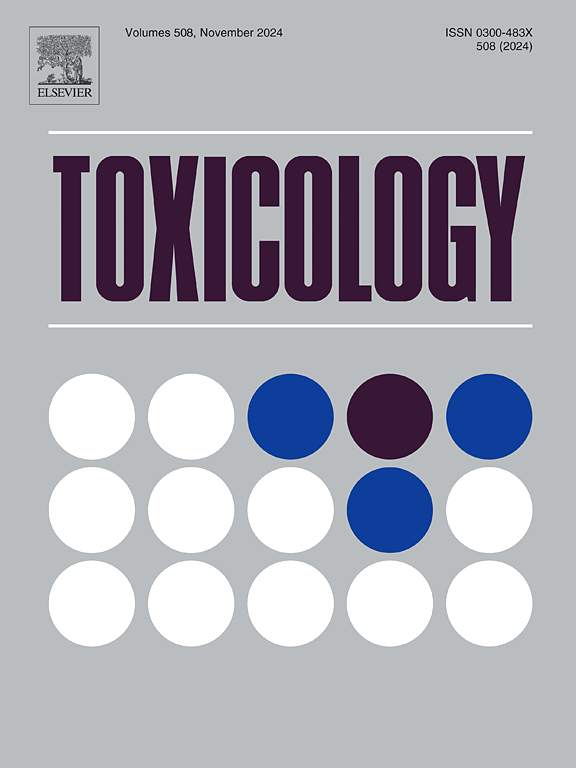Role of neuroglia cell-derived microvesicles in cobalt chloride-induced mitochondrial autophagy in neurons
IF 4.6
3区 医学
Q1 PHARMACOLOGY & PHARMACY
引用次数: 0
Abstract
The extensive use of cobalt resources has significantly increased the risk of cobalt contamination globally, with cobalt chloride posing a serious environmental and health concern. Although previous studies have shown that extracellular vesicles play a key role in intercellular communication, the mechanisms by which extracellular vesicles derived from neuroglia cells affect neuronal cells remain poorly understood. This study aimed to investigate whether microvesicles produced by neuroglia cells could mitigate cobalt chloride-induced neuronal damage and to explore the underlying mechanisms. Our results revealed that cobalt chloride induces cytotoxicity in HT22 and MN9D neuronal cells. A 24-hour cobalt chloride treatment triggered mitochondrial autophagy in both cell types and disrupted their mitochondrial dynamics. Further analysis showed that microvesicles secreted by GL261 neuroglia cells were taken up by both types of neuronal cells. Notably, the uptake of GL261-derived microvesicles by MN9D cells inhibited autophagy and restored mitochondrial membrane potential and reactive oxygen species levels. In conclusion, our findings highlight the critical role of neuroglia cell-derived microvesicles in cobalt chloride-induced neuronal toxicity and offer potential new targets and strategies for the prevention and treatment of cobalt chloride toxicity.
神经胶质细胞来源的微泡在氯化钴诱导的神经元线粒体自噬中的作用。
钴资源的广泛使用大大增加了全球钴污染的风险,氯化钴造成了严重的环境和健康问题。尽管先前的研究表明细胞外囊泡在细胞间通讯中起着关键作用,但来自神经胶质细胞的细胞外囊泡影响神经元细胞的机制仍然知之甚少。本研究旨在探讨神经胶质细胞产生的微泡是否可以减轻氯化钴诱导的神经元损伤,并探讨其潜在机制。结果表明,氯化钴可诱导HT22和MN9D神经元细胞的细胞毒性。24小时氯化钴处理触发两种细胞类型的线粒体自噬并破坏其线粒体动力学。进一步分析表明,GL261神经胶质细胞分泌的微囊泡被两种类型的神经细胞占用。值得注意的是,MN9D细胞摄取gl261衍生的微泡可以抑制自噬,恢复线粒体膜电位和活性氧水平。总之,我们的研究结果强调了神经胶质细胞来源的微泡在氯化钴诱导的神经元毒性中的关键作用,并为预防和治疗氯化钴毒性提供了潜在的新靶点和策略。
本文章由计算机程序翻译,如有差异,请以英文原文为准。
求助全文
约1分钟内获得全文
求助全文
来源期刊

Toxicology
医学-毒理学
CiteScore
7.80
自引率
4.40%
发文量
222
审稿时长
23 days
期刊介绍:
Toxicology is an international, peer-reviewed journal that publishes only the highest quality original scientific research and critical reviews describing hypothesis-based investigations into mechanisms of toxicity associated with exposures to xenobiotic chemicals, particularly as it relates to human health. In this respect "mechanisms" is defined on both the macro (e.g. physiological, biological, kinetic, species, sex, etc.) and molecular (genomic, transcriptomic, metabolic, etc.) scale. Emphasis is placed on findings that identify novel hazards and that can be extrapolated to exposures and mechanisms that are relevant to estimating human risk. Toxicology also publishes brief communications, personal commentaries and opinion articles, as well as concise expert reviews on contemporary topics. All research and review articles published in Toxicology are subject to rigorous peer review. Authors are asked to contact the Editor-in-Chief prior to submitting review articles or commentaries for consideration for publication in Toxicology.
 求助内容:
求助内容: 应助结果提醒方式:
应助结果提醒方式:


